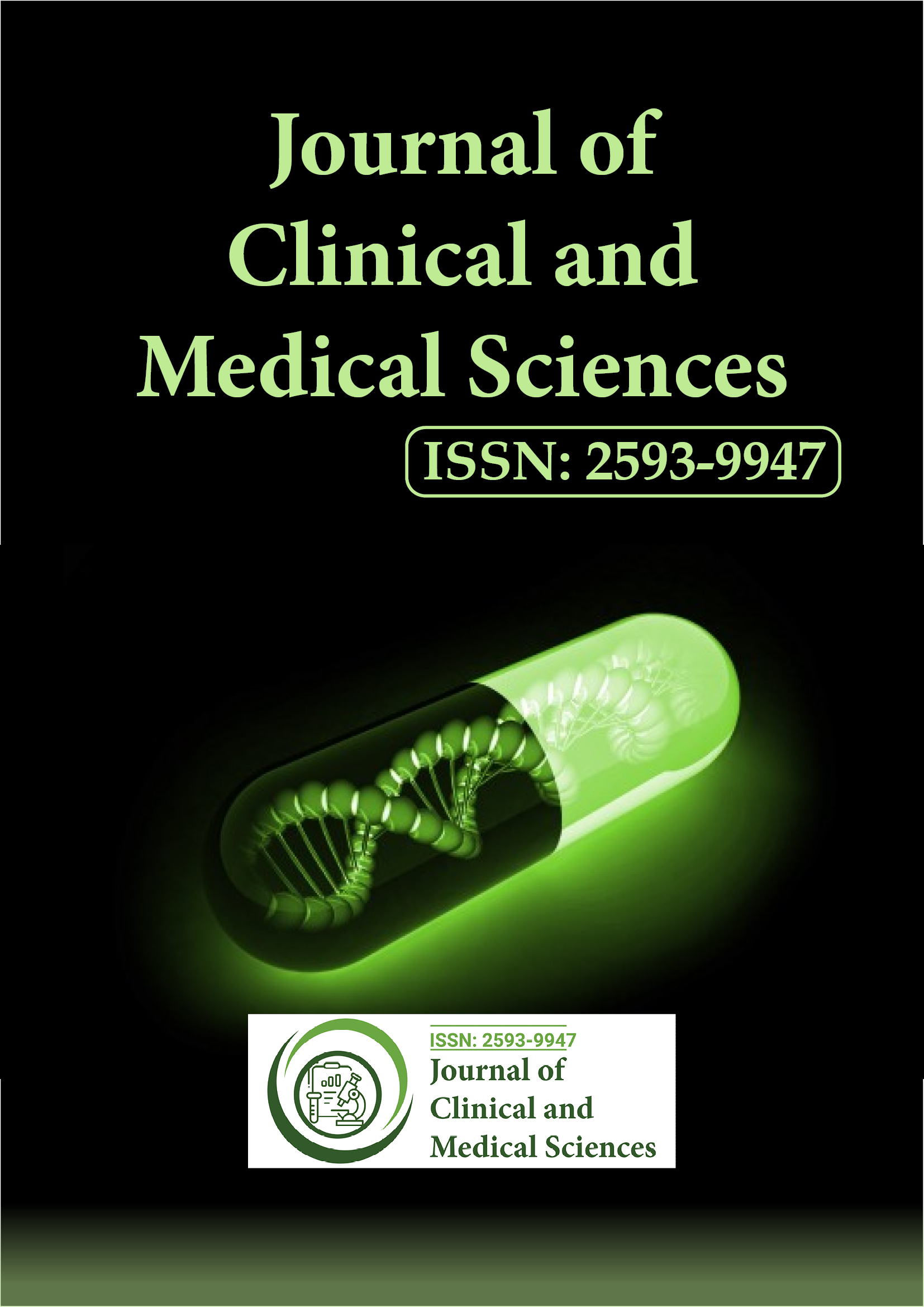Indexed In
- Euro Pub
- Google Scholar
Useful Links
Share This Page
Journal Flyer

Open Access Journals
- Agri and Aquaculture
- Biochemistry
- Bioinformatics & Systems Biology
- Business & Management
- Chemistry
- Clinical Sciences
- Engineering
- Food & Nutrition
- General Science
- Genetics & Molecular Biology
- Immunology & Microbiology
- Medical Sciences
- Neuroscience & Psychology
- Nursing & Health Care
- Pharmaceutical Sciences
Perspective - (2025) Volume 9, Issue 3
Developing Therapies in the Management of Rare Genetic Diseases
Mari Lin*Received: 04-Nov-2023, Manuscript No. JCMS-23-23809; Editor assigned: 08-Nov-2023, Pre QC No. JCMS-23-23809 (PQ); Reviewed: 23-Nov-2023, QC No. JCMS-23-23809; Revised: 12-Mar-2025, Manuscript No. JCMS-23-23809 (R); Published: 20-Mar-2025
Introduction
Rare genetic diseases are a group of disorders that affect a relatively small number of people in the world. Although individually rare, collectively, these diseases impact the lives of millions. Patients suffering from rare genetic diseases often face limited treatment options, little hope for a cure and a reduced quality of life. However, recent advancements in medical research and technology have given rise to a new era of hope. Developing therapies for the management of rare genetic diseases has become an area of intense focus, promising to transform the lives of those affected. This article explores the challenges posed by rare genetic diseases, the innovative therapeutic approaches that have emerged and the future prospects for patients living with these conditions.
Description
Rare genetic diseases, also known as orphan diseases, are characterized by their low prevalence in the population. While individually they may be rare, collectively there are approximately 7,000 recognized rare genetic diseases, impacting an estimated 30 million people in the United States alone. These diseases often result from genetic mutations, leading to a wide range of symptoms and complications. The rarity of each condition makes it challenging to gather sufficient data, conduct clinical trials and develop effective treatments.
Rare genetic diseases encompass a broad spectrum of disorders, including lysosomal storage diseases like Gaucher's disease, metabolic disorders like Phenylketonuria (PKU) and genetic syndromes such as Duchenne muscular dystrophy. The symptoms and severity of these diseases vary widely, making diagnosis and treatment a complex endeavor. Patients affected by these conditions may suffer from chronic pain, disability, organ dysfunction and a reduced lifespan.
The rarity of these diseases presents a unique set of challenges when it comes to developing effective therapies. Pharmaceutical companies are less inclined to invest in the development of drugs for rare diseases due to the small patient populations and potential financial risks.
Gathering sufficient data to understand the natural history of a rare genetic disease is a significant challenge. Clinical trials require substantial participant numbers to draw statistically significant conclusions. In rare diseases, it is often difficult to find enough willing participants.
The genetic diversity within rare diseases can be staggering. Even patients with the same diagnosis may have different underlying genetic mutations, resulting in varied clinical presentations. This makes it challenging to develop one-size-fits-all treatments.
Rare diseases pose regulatory challenges for drug approval. Traditional clinical trial designs may not be feasible due to the small patient populations, necessitating flexible regulatory pathways for drug development.
The development of therapies for rare genetic diseases can be costprohibitive. Small patient populations, coupled with the high costs of research and development, may lead to prohibitively expensive treatments.
Despite these challenges, the field of rare disease therapy has made significant progress in recent years. Innovative approaches and new technologies have brought hope to patients and their families. Gene therapy has emerged as a potential game-changer in the treatment of rare genetic diseases. This approach involves modifying or replacing the faulty gene responsible for the disease with a healthy one. Diseases like Spinal Muscular Atrophy (SMA) have seen remarkable success with gene therapy, leading to FDA approvals for specific treatments.
RNA-based therapies, such as Antisense Oligonucleotides (ASOs), have shown promise in treating rare diseases. ASOs can modify gene expression, potentially mitigating the effects of genetic mutations. This approach has been used to develop treatments for Duchenne muscular dystrophy and spinal muscular atrophy.
To overcome the challenge of limited patient populations, collaborative efforts have emerged. Patient advocacy groups, academic institutions and pharmaceutical companies are working together to pool resources, share data and accelerate the development of therapies.
Regulatory agencies, like the FDA in the United States, offer incentives for the development of orphan drugs, including rare disease treatments. These incentives can include tax credits, grant funding and extended market exclusivity.
Some existing drugs developed for more common conditions have shown promise in treating rare diseases. Repurposing these drugs can offer faster and more cost-effective solutions for patients. Patients and their families have become increasingly involved in the drug development process. Their insights and advocacy have the potential to drive research priorities and ensure that therapies align with the needs and experiences of those affected by rare diseases.
Rare diseases are not confined to a single country or region. International collaboration on research and drug development can expedite progress by tapping into a wider pool of knowledge, resources, and patient populations.
The era of precision medicine is gradually extending to rare genetic diseases. Tailored treatments based on an individual's genetic profile offer the potential for more effective and personalized care.
Regulatory agencies continue to adapt to the unique challenges posed by rare diseases. Flexible pathways for drug approval and reimbursement are being explored to expedite access to innovative therapies.
Conclusion
Rare genetic diseases have long been the underdog in the realm of medical research and drug development. However, the landscape is shifting rapidly. Innovative therapeutic approaches like gene therapy and RNA therapies are bringing hope to patients who were once left with little to no treatment options. Collaborative efforts, regulatory incentives and advancements in technology are propelling the field forward.
